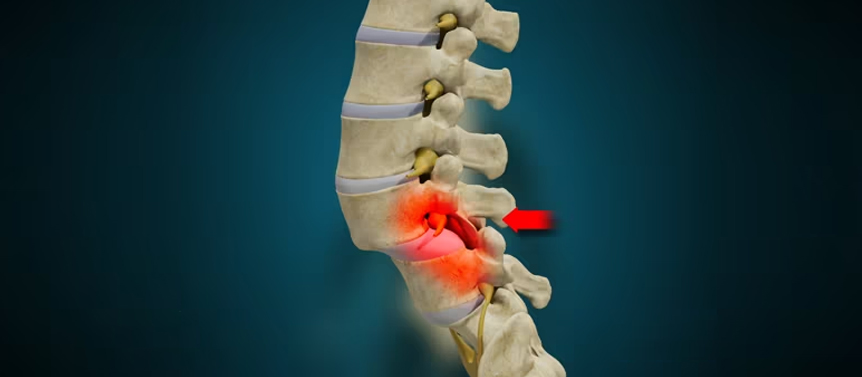Spondylolisthesis

Spondylolisthesis is a spinal condition characterized by the forward displacement of one vertebra over the one below it. This misalignment can occur in any region of the spine, but it most commonly affects the lower back (lumbar spine). Spondylolisthesis can lead to instability, nerve compression, and pain.
There are several types and causes of spondylolisthesis, including:
- Congenital spondylolisthesis: This occurs when a person is born with a defect or abnormality in the spine that predisposes them to vertebral slippage.
- Isthmic spondylolisthesis: This type is caused by a defect in the pars interarticularis, a small bony segment that connects the upper and lower parts of the vertebra. The defect can be due to a stress fracture (spondylolysis) or a developmental anomaly.
- Degenerative spondylolisthesis: This typically occurs in older individuals due to age-related degeneration of the spinal structures, such as the intervertebral discs and facet joints, leading to vertebral slippage.
- Traumatic spondylolisthesis: This type is caused by a traumatic injury to the spine, such as a fracture or dislocation, that disrupts the normal alignment of the vertebrae.
The treatment for spondylolisthesis depends on the severity of symptoms, the degree of vertebral slippage, and the impact on nerve function. Conservative treatments are often attempted initially and may include:
- Pain management: Nonsteroidal anti-inflammatory drugs (NSAIDs), physical therapy, and activity modification can help alleviate pain and improve function.
- Bracing: In some cases, wearing a back brace may provide support and stability to the affected area.
- Physical therapy: Specific exercises and stretches can help strengthen the supporting muscles and improve flexibility.
If conservative measures fail to provide relief, or if the condition is severe and causing significant neurological symptoms, surgery may be recommended. The surgical options for spondylolisthesis include:
- Spinal fusion: This procedure aims to stabilize the affected segment of the spine by fusing the slipped vertebra with adjacent vertebrae using bone grafts and implants (such as screws, rods, or plates).
- Decompression: In cases where nerve compression is present, additional procedures like laminectomy or discectomy may be performed to relieve pressure on the nerves.
The choice of surgical technique depends on the individual patient, the degree of vertebral slippage, and the presence of any associated spinal conditions. A qualified spine surgeon or orthopedic surgeon will evaluate the specific case and recommend the most appropriate treatment approach.

